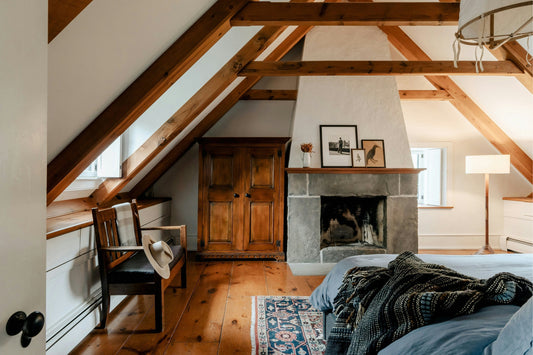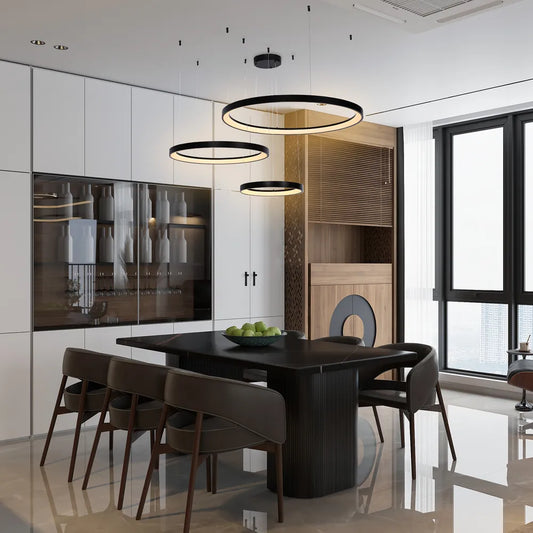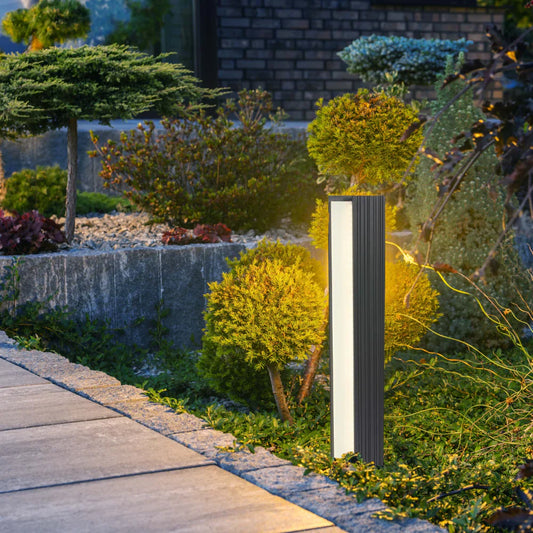
Energy-saving lighting systems for the home are designed to provide efficient illumination while reducing electricity consumption and minimizing environmental impact. These systems leverage advanced technologies, materials, and designs to cut down on energy use without compromising on light quality or the aesthetic appeal of your living spaces. Here are several key types of energy-saving lighting systems and strategies for residential use:
LED Lighting
LED Bulbs and Fixtures: Light Emitting Diodes (LEDs) are at the forefront of energy-saving home lighting. They use up to 75% less energy and last 25 times longer than incandescent lighting. LED technology has advanced to offer a wide range of colors, brightness, and designs, making it suitable for every room in the house.
Smart Lighting Systems
Automated Controls: Smart lighting systems can automatically adjust the brightness of lights based on the time of day or occupancy, using motion sensors and timers.
App and Voice Control: These systems allow for remote control of lighting via smartphone apps or voice-activated home assistants, enabling users to turn lights on and off or adjust settings without being physically present.
Energy-Efficient Bulbs
Compact Fluorescent Lamps (CFLs): CFLs use about one-third of the energy of incandescent bulbs and last up to ten times longer. They provide a cost-effective alternative for areas where LED lighting might not be suitable or preferred.
Halogen Incandescents: These bulbs are more energy-efficient than traditional incandescents and can be used with dimmers to save energy when full brightness is not needed.
Daylighting
Natural Light Utilization: Enhancing the use of natural light can significantly reduce reliance on artificial lighting during the day. Consider skylights, larger windows, and strategically placed mirrors to maximize daylight in your home.
Task Lighting
Focused Illumination: Instead of lighting an entire room, use task lighting (like desk lamps, under-cabinet lights) to illuminate specific work areas. This approach saves energy by providing light only where it’s needed.
Lighting Controls
Dimmers: Installing dimmer switches allows for adjusting the light level to match specific needs and activities, reducing energy consumption.
Timers and Motion Sensors: These can automatically turn lights off in unoccupied rooms or adjust lighting based on the time of day.
Eco-Friendly Materials and Designs
Sustainable Materials: Look for lighting fixtures made from recycled or sustainable materials to further reduce your environmental footprint.
Efficient Designs: Some lighting designs are optimized for energy efficiency, including reflective surfaces that enhance light distribution without increasing energy use.
Solar-Powered Lights
Outdoor Lighting: Solar-powered pathway lights, garden lights, and security lights can provide effective illumination without any impact on your electricity bill.
Low Energy Bulbs
Low energy bulbs, commonly referred to as energy-efficient light bulbs, are designed to provide the same amount of light (lumens) as traditional incandescent bulbs but use less electrical power to do so. This not only results in lower electricity bills but also contributes to reducing the environmental impact by decreasing energy consumption. The most popular types of low energy bulbs include:
LED Bulbs (Light Emitting Diode)
Efficiency: LEDs are the most energy-efficient lighting option available today, using up to 90% less energy than traditional incandescent bulbs and lasting up to 25 times longer.
Versatility: Available in a variety of colors, brightness levels, and designs, LED bulbs can be used in almost any residential setting, from standard room lighting to decorative accent lighting.
Cost: While the initial purchase price is higher than traditional bulbs, the long-term savings on energy bills and replacement costs make LEDs a cost-effective choice.
Compact Fluorescent Lamps (CFLs)
Efficiency: CFLs use about 70% less energy than incandescent bulbs and can last up to 10 times longer.
Light Quality: Early CFLs were criticized for their slow start-up time and poor color rendering, but newer models have significantly improved in these areas.
Disposal: CFLs contain a small amount of mercury, so they must be disposed of properly to avoid environmental contamination.
Halogen Incandescents
Efficiency: These bulbs are more energy-efficient than traditional incandescents, saving about 25-30% in energy use. They also offer a longer lifespan.
Light Quality: Halogen incandescents provide a light quality and color similar to traditional incandescent bulbs, making them a popular choice for those seeking energy savings without sacrificing light quality.
Compatibility: They are fully dimmable and compatible with most existing fixtures designed for incandescent bulbs.
Motion Detector lighting
Motion detector lighting incorporates technology that automatically turns lights on when motion is detected within a certain range and turns them off after a predefined period of inactivity. This type of lighting is designed for convenience, security, and energy efficiency.
When there are no people nearby, this type of system saves energy by turning off unnecessary lights until needed again.
Ambient Light Sensor
An Ambient Light Sensor (ALS) is a device that measures the amount of natural or artificial light present in the environment and adjusts lighting or display brightness accordingly. These sensors play a crucial role in optimizing visibility and reducing energy consumption across various applications, from consumer electronics to smart home systems.
What is Energy Saving?
Energy saving is the process of reducing your energy usage. It can be achieved in many ways, including using energy efficient appliances and light bulbs. Energy saving is important for reducing pollution, greenhouse gas emissions and costs associated with these issues.
Energy savings are also a good way to save money on your household bills because you won't have to pay as much for the electricity that you use from your power company (or other utility provider).
Why is Saving Energy Important?
Energy-saving lighting systems save money. You can save up a significant amount per year by switching to energy-efficient lighting, and you'll be helping the environment at the same time.
Energy efficient light bulbs use less energy than their traditional counterparts, so they help reduce carbon emissions and reduce your carbon footprint. They also last longer than traditional light bulbs - meaning that they won't need replacing as often!
A good rule of thumb is: if you're not already using it, then get an energy saving light bulb now!
Which Is The Most Efficient Bulb?
LED bulbs:
An LED is a semiconductor light source that can be used as a replacement for incandescent or fluorescent lamps. LEDs are more efficient than other types of lights, but they cost a little more to purchase. On the other hand, these also require less energy to operate, 80% less than traditional bulbs and 50% less than CFL bulbs. So you'll save money on your electricity bill by using the LED bulbs or lights instead of incandescent or fluorescent tubes.
How to Choose the Most Efficient Light Bulb?
Choosing the most efficient light bulb involves considering several key factors that contribute to energy savings, longevity, and the quality of light provided. Here’s a guide to help you select the most efficient light bulb for your needs:
Look for Energy-Efficient Types
LED Bulbs: Light Emitting Diodes (LEDs) are currently the most energy-efficient lighting option available, using up to 90% less energy than traditional incandescent bulbs and lasting up to 25 times longer. They are ideal for almost all lighting applications.
CFL Bulbs: Compact Fluorescent Lamps (CFLs) use about 70% less energy than incandescent bulbs and can last up to 10 times longer. While not as efficient as LEDs, they are a cost-effective option for areas where lighting is used frequently.
Consider Lumens, Not Watts
Lumens measure the amount of light produced by a bulb, whereas watts measure energy consumption. For energy efficiency, focus on getting the highest number of lumens for the lowest number of watts. A higher lumen-to-watt ratio means the bulb is more efficient.
Check the Colour Temperature
Colour temperature is measured in Kelvins (K) and describes the color appearance of the light emitted by a bulb. Bulbs with a color temperature around 2700K emit a warm light similar to incandescent bulbs, while those around 5000K or higher emit a cooler, daylight-like light. The choice depends on personal preference and the intended use of the room.
Evaluate Color Rendering Index (CRI)
The CRI measures how accurately the light from a bulb reveals the true colors of objects compared to natural light. A CRI of 80 or above is considered good and is important for tasks requiring color precision or in spaces where accurate color representation is important.
Dimming Capability
If you require adjustable lighting, look for bulbs that are compatible with dimmer switches. Not all energy-efficient bulbs work with all types of dimmers, so it’s important to verify compatibility to ensure proper function and to avoid shortening the bulb’s lifespan.
Consider the Bulb’s Lifetime
LED bulbs generally have the longest lifespans, followed by CFLs and then halogen incandescents. Choosing a bulb with a longer lifespan not only reduces the frequency of replacements but also contributes to long-term energy savings.
Look for Certifications and Ratings
Energy Star certification is a good indicator of an energy-efficient light bulb. Energy Star-rated bulbs meet strict efficiency, quality, and lifetime criteria.
The Lighting Facts Label provides information about the bulb’s brightness, energy cost, life expectancy, light appearance (color temperature), and energy used.
Environmental Considerations
Choose bulbs that do not contain harmful substances. For example, CFLs contain a small amount of mercury, requiring careful disposal, whereas LEDs do not contain mercury and have a smaller environmental impact.
Cost vs. Savings
Consider the initial cost versus long-term savings. LEDs have a higher upfront cost than CFLs and incandescent bulbs but offer significant energy savings and a longer lifespan, which can result in lower overall costs over time.
By considering these factors, you can choose the most efficient light bulb that meets your lighting needs, preferences, and helps to minimize your energy consumption and environmental impact.



